The Porsche Boxster Spyder is a car well worth waiting for. Start with a razor sharp Boxster S, give the 3.4 litre flat six a bit of a nudge to 235kW, knock 80kg off its weight, bringing it down to 1275kg, and you can see why the Spyder is worth the wait. The good news is, it won’t be too long before the car is in customer’s hands.
Helping build the anticipation is a new suite of images and press material from Porsche UK. It’s reasonably detailed, too, listing a number of the weight saving measures taken by Porsche engineers. For example, the fuel tanks has been reduced to 54 litres, down from 64 litres, which saves 7kg. Take a few more steps like this, and you soon have you 80kg.
The goodies can be found after the jump.
UPDATE 27 March: Over 40 new images added!
The definitive Porsche roadster – the new Boxster Spyder
- Lightweight, purist model offers authentic roadster experience
- 80 kg lighter than equivalent Boxster S model
- Bolder, more powerful and sportier than ever
A lightweight version of the mid-engined Porsche Boxster roadster, the Spyder represents the true, purist form of the Porsche sports car – light, powerful, open-roofed, and very efficient.
This is precisely the formula already applied in creating the most successful road-going sports and racing cars throughout the history of Porsche, ranging from the legendary 550 Spyder of the 1950s to the RS Spyder Le Mans Prototype race car so successful in motorsport today.
Weighing 1,275 kg, the Boxster Spyder is the lightest model in the Porsche line-up, and continues this clear-cut philosophy in a package offering full homologation for the road, and fulfilling a popular wish expressed by Porsche customers.
The new model becomes the third version in the Boxster range, joining the Boxster and Boxster S, yet at first sight stands out clearly from the other models. This is quite simply because the Spyder has been developed essentially for driving in the open air.
Bold and sporty styling
The Boxster Spyder is first and foremost a Boxster – but interpreted in a totally new way. The purist character of the car is evident at first sight, with particular emphasis on the two-seater roadster design with its mid-engine. The new, elegantly long rear lid, together with new wheels and distinctive styling touches inside and out, give the car an absolutely unique look.
The low-slung, lightweight soft top extends far to the rear at a distinctive angle and serves to protect the driver and passenger from bright sunshine, wind and rain. When closed, the soft top, together with the bespoke, shallower side windows and the two unique striking bulges on the single-piece rear engine cover, boasts a stretched and sleek silhouette reminiscent of the Carrera GT super sports car.
And classic Porsche logos run along the bottom of each door as a leitmotif inspired by earlier Porsche Spyder race cars.
The main objective of the Porsche Design Studio in creating the Boxster Spyder was to make the classic design of the current Boxster S even purer and to make clear reference to classic Porsche racing cars. Great importance was placed on emphasising the car’s functions. The design of the manual roof is intended not only to perfect the silhouette but also to meet the basic needs of the passengers in bad weather. For this reason, the top speed with the hood raised is limited to 124mph.
Two convex curves running lengthwise in the completely new aluminium rear lid, the fixed rear spoiler and a modified front spoiler lip help to optimise the car’s aerodynamics. As you would expect, the aerodynamic qualities of the Boxster Spyder have been honed for superior driving dynamics. The aerodynamic Cd rating of 0.30 is identical to the Boxster S, while the drag (Cd x A) is in fact lower due to the smaller frontal area. The excellent aerodynamics makes a significant contribution to the agility of the car at speed, and also to low fuel consumption.
Significantly, the Spyder weighs 80kg less than the Boxster S which, combined with a lower centre of gravity and revised chassis settings, gives the Boxster Spyder the calibre of driving dynamics that clearly reflect the unique look of the car.
Higher performance through intelligent weight reduction
While the overall objective behind the Boxster Spyder was to improve performance, this has been achieved in an intelligent way, not simply by boosting engine power. Instead, every detail was scrutinised to deliver the required dynamic responses, with the driver’s needs – as is typical of Porsche – the primary focus.
The obvious point of difference between the Boxster Spyder and its siblings is its manual roof instead of an electric folding one, and the use of a large aluminium rear lid, that not only creates that essential ‘speedster’ look, but also contributes to the car’s lightweight character and thrilling performance.
The purist qualities of the Spyder are delivered by a comprehensive programme of lightweight features:
- aluminium doors similar to those on the 911 Turbo and GT3 saves 15 kg
- the use of an aluminium rear engine cover saves 3 kg
- since the Spyder was designed for sporty open-top driving, the air conditioning has been removed and saves 12 kg
- using lightweight carbon fibre sports bucket seats saves 12 kg
- the fuel tank has a capacity of 54 litres, 10 litres fewer than standard Boxster, saving 7 kg
- the lightweight design of the 19†Spyder alloy wheels saves 5 kg
- there is no radio and a smaller battery, saving approximately 3 kg
- dispensing with cup holders and using lightweight interior door trims with door opening loops saves 2 kg
The interior of the Boxster Spyder has been adopted from the Boxster S, but re-worked with particular emphasis on purism, ergonomics and authenticity. Finished mainly in black, the cockpit is complemented by features in exterior colour and highlights in red. Of particular note is the omission of the instrument cowl above the dials, which lowers weight and also sends out a clear puristic signal
Chassis tuned for even sharper handling
As is evident, systematic lightweight design sets the Boxster Spyder apart, and delivers an excellent power-to-weight ratio of 4 kg/hp (9 per cent better than a Boxster S) that manifests itself in remarkable performance, culminating in a lap time around the Nurburgring Nordschleife seven seconds quicker than that of a Boxster S.
The specially adapted chassis of the Boxster Spyder gives the car its more dynamic character. Lowering the entire body by 20mm contributes further to the car’s lower centre of gravity and the combined use of modified anti-roll bars and even stiffer spring/damper units significantly increases the performance potential. This is supported by a front track width increased by 4mm and an 8mm wider rear track. A mechanically locking differential is fitted as standard, and delivers significantly improved traction on changing road surfaces and when cornering at the extreme limits of performance. Locking values are 22 per cent under power and 27 per cent in overrun.
Although delivering a firmer and sporty chassis set-up, the Boxster Spyder retains a remarkably compliant ride; not least as a result of the tyre pressures being able to be set slightly lower due to the weight reduction measures.
More power from classic flat six engine
The Boxster Spyder features a tuned version of the proven 3.4-litre flat six ‘boxer’ engine with Direct Fuel Injection, which is mounted amidships ahead of the rear axle. Maximum output is 320 bhp, 10 bhp more than in the Boxster S. As standard, the Spyder features a six-speed manual gearbox, but the Porsche-Doppelkupplungsgetriebe (PDK) double-clutch transmission is available as an option. When equipped with PDK and the optional Sports Chrono Package, the new Spyder, using Launch Control, can accelerate from a standstill to 62mph in 4.8 seconds. Again with optional PDK, fuel consumption is a mere 30.4mpg (9.3 litres/100km) in the NEDC New European Driving Cycle and top speed, in turn, is 166 mph (267 km/h) – with the roof removed.
The outstanding driving dynamics and steering precision of the Boxster Spyder achieves a standard never before seen in any Boxster. The car’s lightweight construction, combined with the increase in performance and modifications of the chassis, offers not only superior driving pleasure, but also a level of performance quite unique in the market.
Market introduction of the new Porsche Boxster Spyder started worldwide in February 2010, and the car is priced from £46,387 in the UK. Standard specification on every Spyder includes 6-speed manual transmission, 19†Boxster Spyder alloy wheels, manual two-piece hood comprising sunshield and weather protector, wind deflector, sports chassis lowered by 20 mm, lightweight carbon fibre sports bucket seats trimmed in Alcantara/leather, Porsche Stability Management (PSM), 3-spoke sports steering wheel, fixed rear spoiler, and heat insulating glass.
Included in the purchase price is the invitation for customers to explore the dynamic attributes of their Boxster Spyder, and develop their own skills behind the wheel, courtesy of a Driving Experience Programme at the Porsche Experience Centre at Silverstone.
Porsche Boxster Spyder key options:
- Porsche Ceramic Composite Brakes (PCCB) £5,349.00
- Sports seats with black leather interior £2,049.00
- Porsche Communication Management with satellite navigation £1,945.00
- Porsche Doppelkupplungsgetriebe (PDK) double-clutch gearbox £1,962.00
- Bi-Xenon headlights £1,173.00
- Steering wheel-mounted paddle-shift for PDK £277.00
- Sports exhaust system £1,276.00
- PDK Sport Chrono Package Plus with launch control £531.00
- Sport Chrono Package Plus for manual transmission £531.00
- Fully automatic climate control £998.00
- Metallic paint £602.00
- Sports short throw gear shift £380.00
- Heated seats £289.00
- Radio no charge
Technical data – Boxster Spyder vs Boxster S:
Boxster Spyder // Boxster S
- Engine: 3,436cc direct fuel injection flat six // 3,436cc direct fuel injection flat six
- Power: 320 hp/7,200 rpm // 310 hp/6,400rpm
- Torque: 370 Nm/4,750rpm // 360 Nm/4,400rpm
- 0-62mph (manual): 5.1 secs // 5.3 secs
- 0-62mph (PDK Sport Chrono Plus): 4.8 secs // 5.0 secs
- 0-99mph (manual): 10.8 secs // 11.6 secs
- 0-99mph (PDK): 10.3 secs // 11.1 secs
- Top speed: 166mph (hood open) // 170mph; 124mph (hood closed) //Â 170mph
- Combined mpg (manual): 29.1 // 29.7
- Combined mpg (PDK): 30.4 // 30.1 (PDK)
- CO2: 228 g/km (manual); 218 g/km (PDK) // 223 g/km (manual); 221 g/km (PDK)
- Kerbweight: 1,275kg (PDK + 25kg) // 1,355kg (PDK + 25kg)
- Price: £46,387.00 // £42,508.00
The legendary heritage of the Porsche Spyder
In terms of its fundamental concept, the entire Boxster family is the successor to the legendary 550 Spyder built back in 1953, both models sharing the same mid-engined roadster concept offering low weight and supreme agility combined with equally outstanding driving pleasure – in essence, an authentic roadster experience.
Through their fundamental concept, all models in the Boxster range are acknowledged as the successors to the legendary 550 Spyder built back in 1953: The philosophy of these Porsche sports cars is based on a mid-engine roadster concept, low weight, purist technology and style, as well as superior agility combined with truly unique driving pleasure.
Introducing the 550 Spyder in October 1953, Porsche not only presented the first sports car built in Stuttgart-Zuffenhausen specifically for motorsport, but also set the foundation for a long series of spectacular racing wins.
In technical terms the fast and agile Spyder stood out from the start through its independent
suspension as well as a pendulum rear axle and torsion bar springs. Apart from the car’s excellent driving qualities, lightweight construction was of course the topmost commitment of Porsche’s engineers, overall weight of the 550 Spyder amounting to just about 550 kg or 1,213 lb. But contrary to many assumptions, the “550†model designation has nothing to do with the weight of the car – rather, it specifies the production number 550 given to the project by the Porsche Engineering Office, which incidentally dates all the way back to the year 1931.
The power unit featured in the 550 Spyder known to this very day as the “Fuhrmann engine†is almost as legendary as the car itself. The first drawings of this brand-new model developed under the guidance of Porsche Senior Engineer Ernst Fuhrmann were completed on the drawing board in 1952.
Destined to become the President and Chief Executive Officer of Porsche AG in 1976, Fuhrmann used all the options of modern racing engine technology in designing and building this 1.5-litre light-alloy four-cylinder. Technical features such as four overhead camshafts with side shaft drive, double ignition, a crankshaft running in four bearings and eight-litre dry sump lubrication gave the engine reliable maximum output of 110 bhp at 7,800 rpm. And in the years to come maximum power of this engine code-named the 587 was to be increased even further to 180 bhp.
The Porsche 550 A Spyder resting on an even lighter and much stiffer tubular spaceframe instead of a flat frame and boasting engine output of 135 bhp made its debut in 1956. The 550 A weighed 530 kg in ready-to-drive condition, and it was the 550 A which gave Porsche the Company’s first overall win in a race for the Manufacturer’s World Championship. In May 1956, Italian driver Umberto Maglioli scored a sensational victory in the Targa Florio, at the time the most challenging road race in the world.
The 550 was followed by other extremely successful versions of the Spyder such as the Porsche 718 RSK raced for the first time in 1957. Standing out as a dynamic performer against bigger competitors, the Porsche 718 RSK Spyder was indeed very successful in numerous World Championship races not only in the 1.5- or 2.0-litre class, but also in the top 3.0-litre class, frequently leaving even much more powerful competitors far behind.
In response to new FIA regulations for racing cars requiring a closer connection with their production counterparts, the 718 RS 60 developed for the 1960 season on the basis of the 718 RSK received not only a larger 1600-cc power unit, but also features such as a larger windscreen, a fully functioning roof and even a luggage compartment behind the 160 bhp four-camshaft four-cylinder power unit, that is components quite unusual on a racing car.
From outside the new Spyder was recognisable through its round and low-slung front end, at the rear it boasted a bulge tapering out towards the back of the car. On the track the 718 RS 60 quickly scared the competition, giving Porsche the greatest success the Company had achieved so far particularly in long-distance racing. In the car’s very first event, the 12 Hours of Sebring, the 718 RS 60 came first and second with Gendebien/Herrmann and Holbert/Sheckter at the wheel.
Overall victory in the 44th Targa Florio also went to Zuffenhausen in 1960, with Joakim Bonnier and Hans Herrmann crossing the finish line more than six minutes ahead of the three-litre Ferrari. And a second place in the 1,000 Kilometres or Nürburgring rounded off this unique story of success. With Swiss racing driver Heini Walter at the wheel, the 718 RS 60 soon also proved its qualities in hill-climbing, bringing home the third and fourth European Hill-Climb Championships in a row in 1960 and 1961.
In 2004 and 2008 Porsche dedicated a limited edition of special Boxsters bearing the additional name Spyder, inspired by these legendary racing cars. By contrast, the new Boxster Spyder is a regular, specially developed and upgraded production model with far-reaching modifications versus the Boxster and Boxster S.
The current Porsche RS Spyder race car was developed in 2005 as a completely new car from the ground up for LMP2 (Le Mans Prototype 2) racing regulations. In the 34 races held in the American Le Mans Series up to the end of 2008, the RS Spyder entered by the Penske Racing Team brought home a total of 24 class and 11 overall victories.
Scoring this kind of success, the Porsche RS Spyder also won the Manufacturer’s, Team and Driver’s Championships in the LMP2 class in 2006, 2007 and 2008. In 2007 and 2008, to mention yet another outstanding example, the RS Spyder was the superior winner in its category in the 24 Hours of Le Mans. And last but certainly not least, this sports prototype from Weissach also proved unbeatable in the 2007 Le Mans Series, winning all the races in the season and, obviously, the Championship itself.
The RS Spyder has also won the Michelin Green X Challenge several times as the car with the highest level of overall efficiency; that is the best balance of lap times on the one hand, and fuel economy on the other.
Such credentials are very much the epitome of Porsche Intelligent Performance, and this brings the entire Spyder story full circle, with the new Boxster Spyder likewise offering a supreme standard of efficiency and the performance of a genuine winner right from the start.
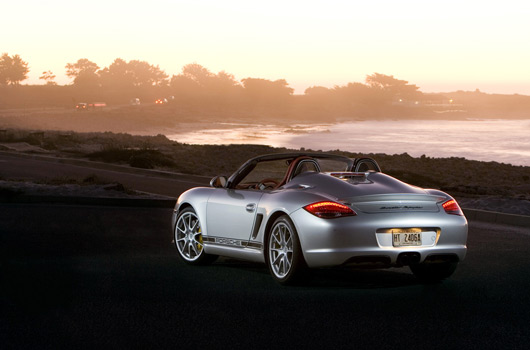
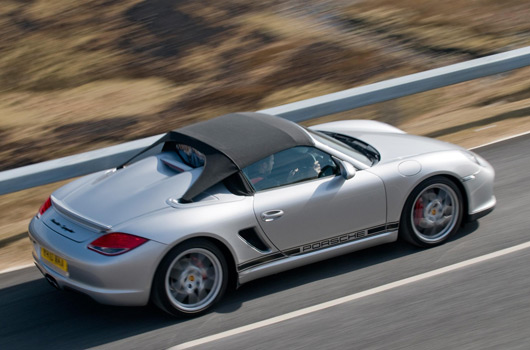
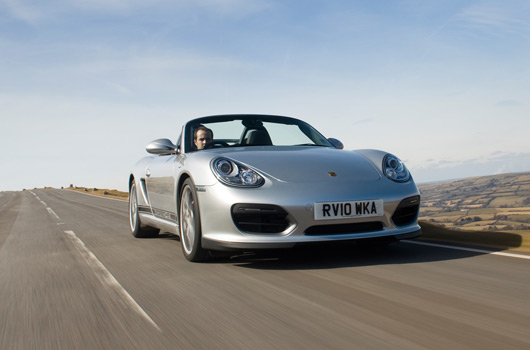
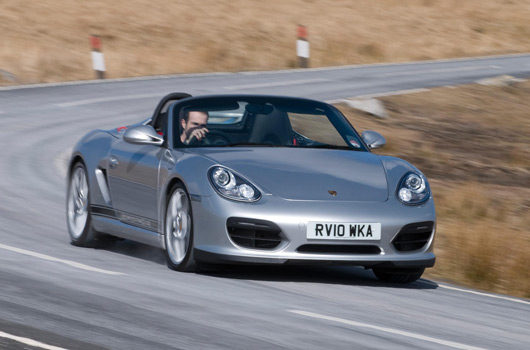
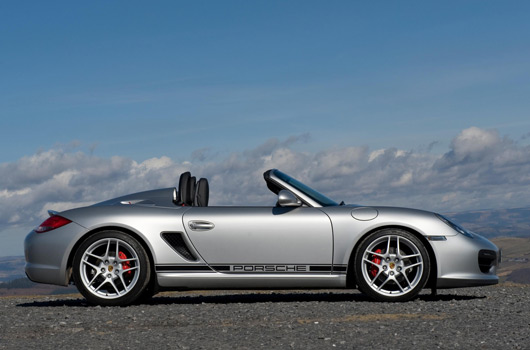
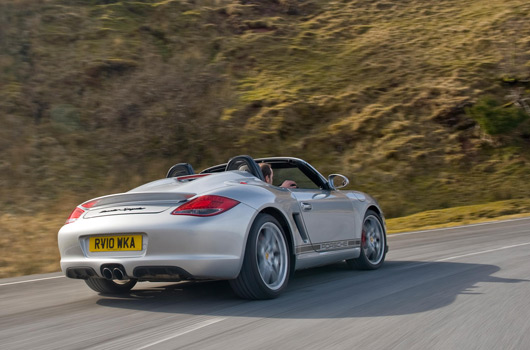
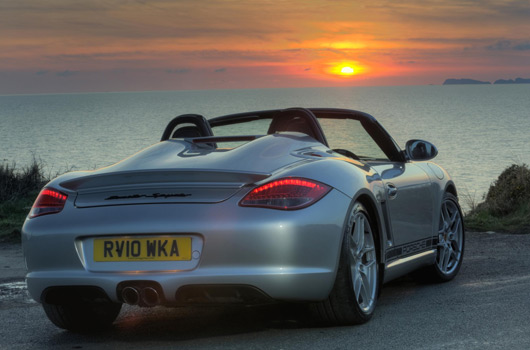
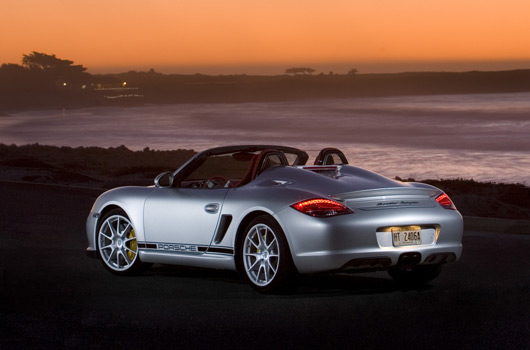
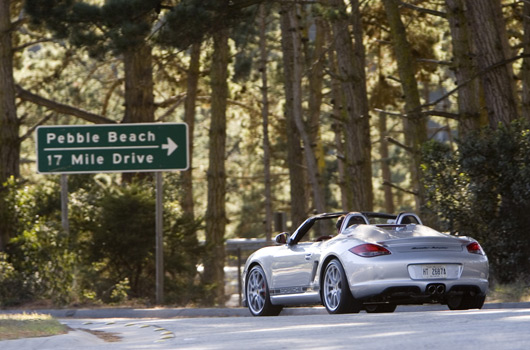
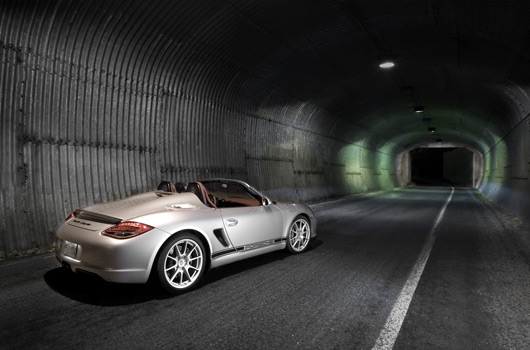
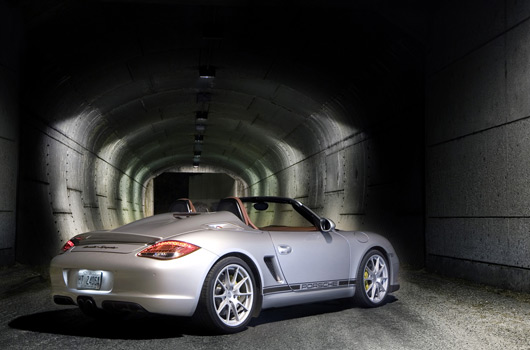
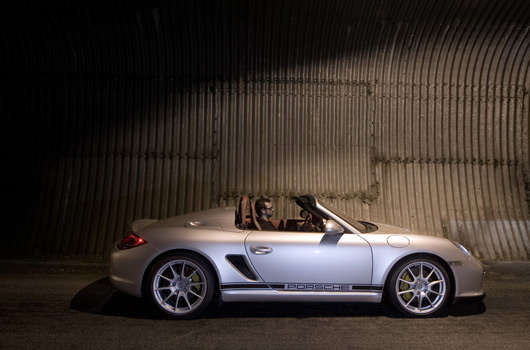
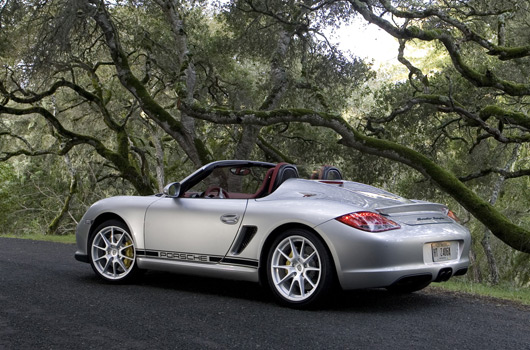
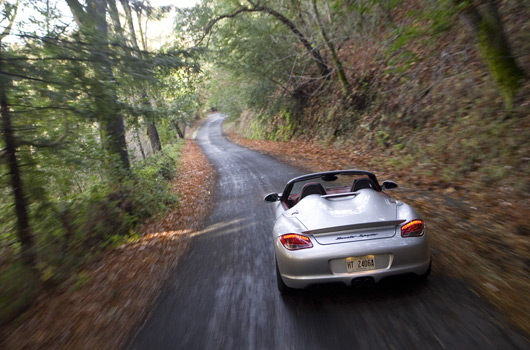
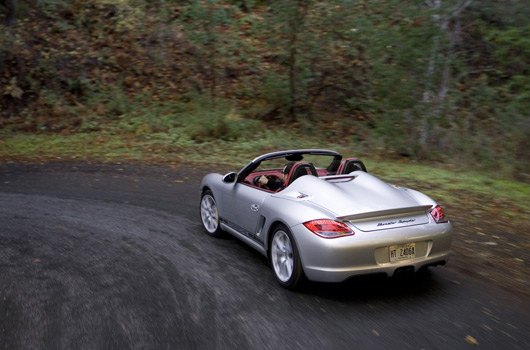
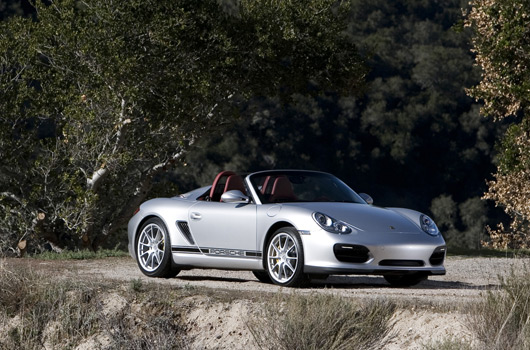
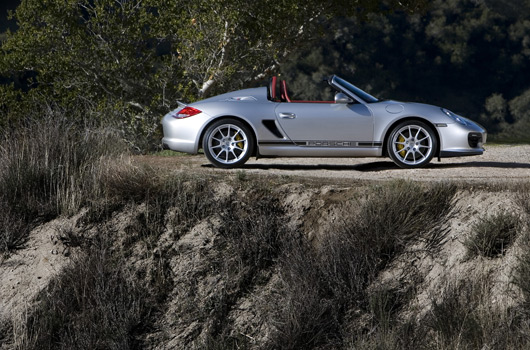
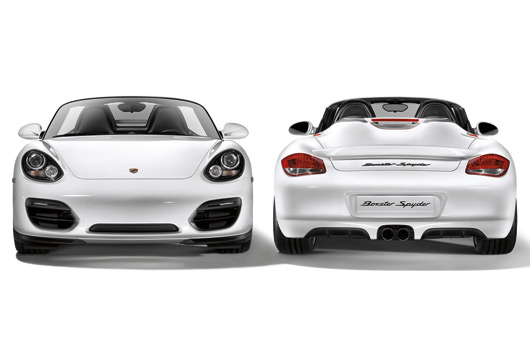
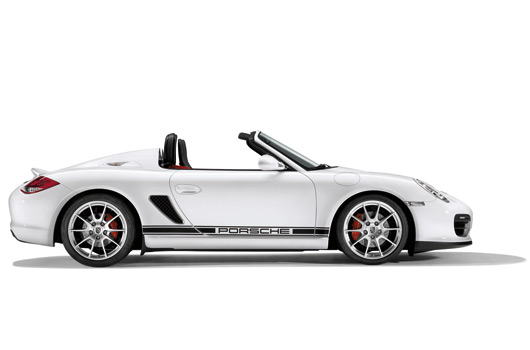
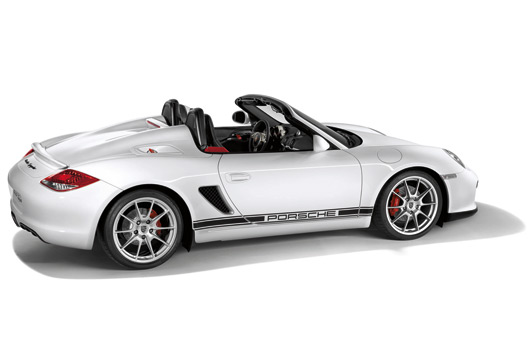
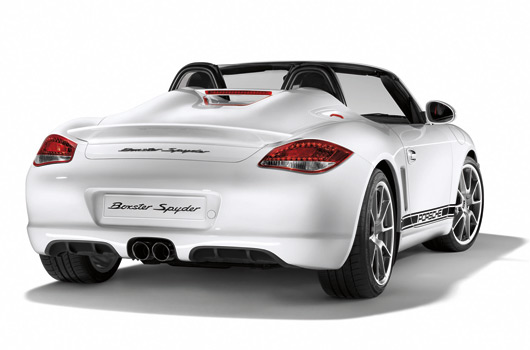


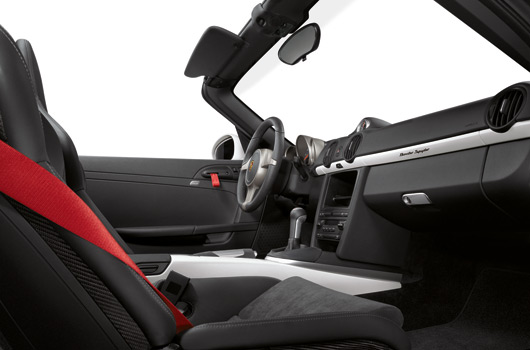
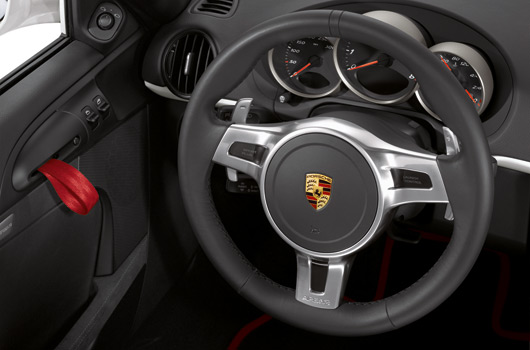

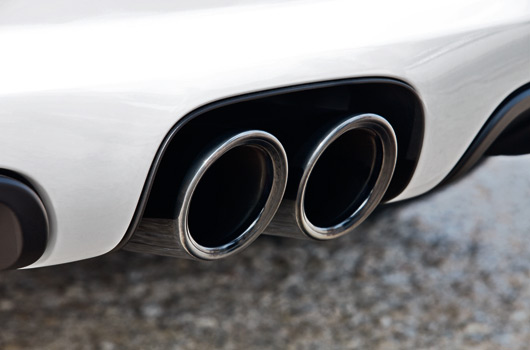
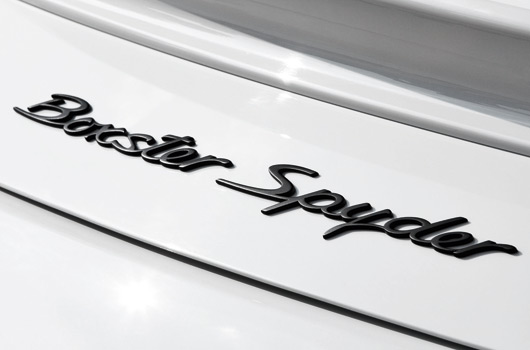
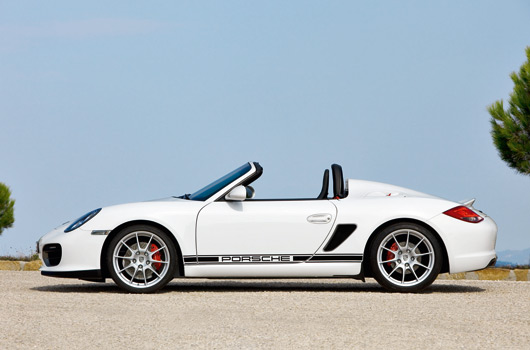
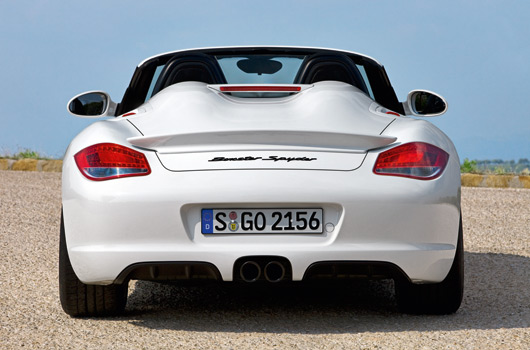
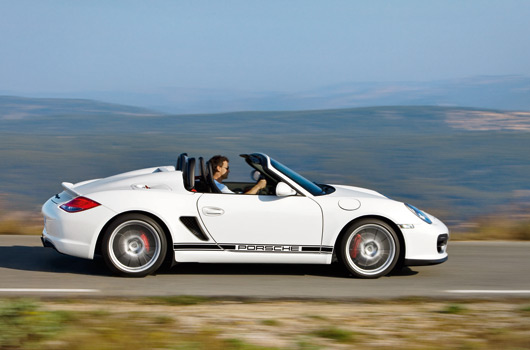
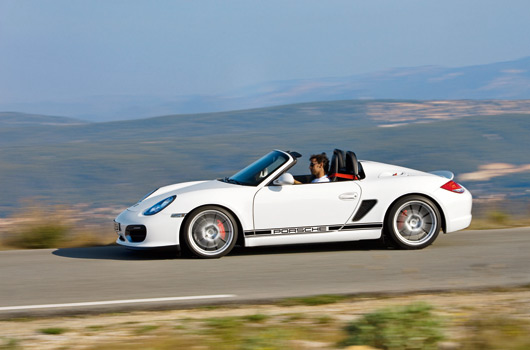
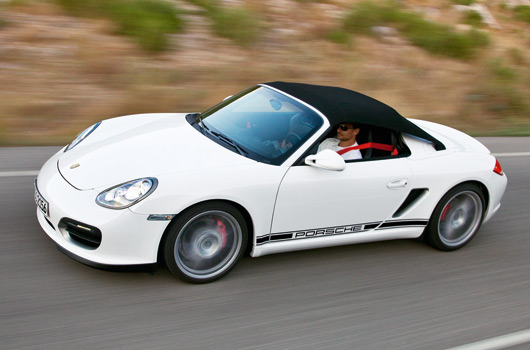
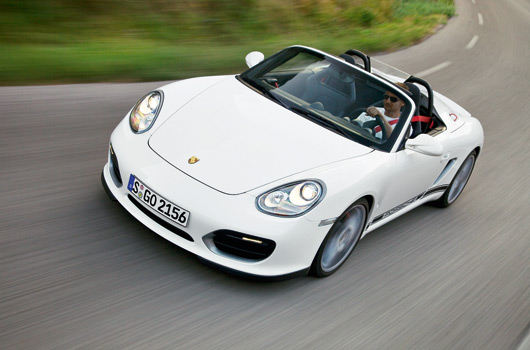
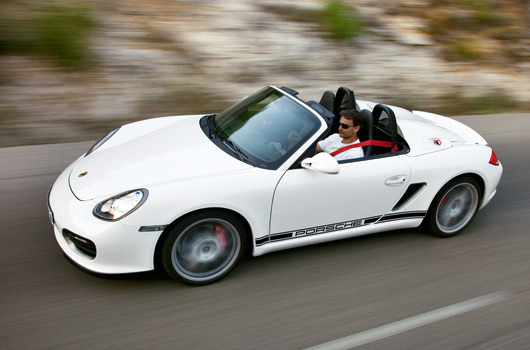
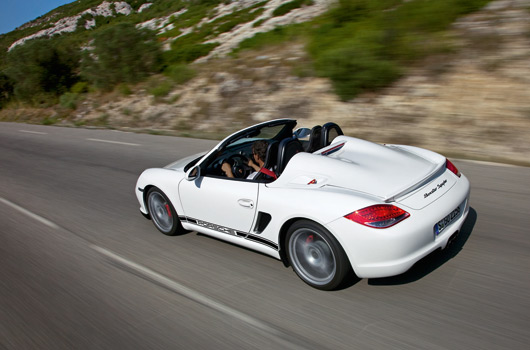
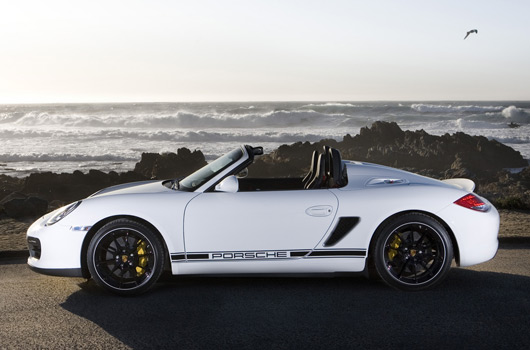
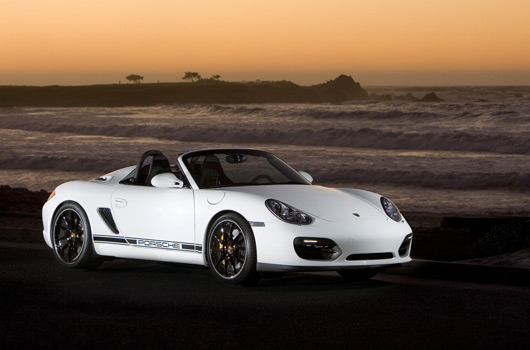
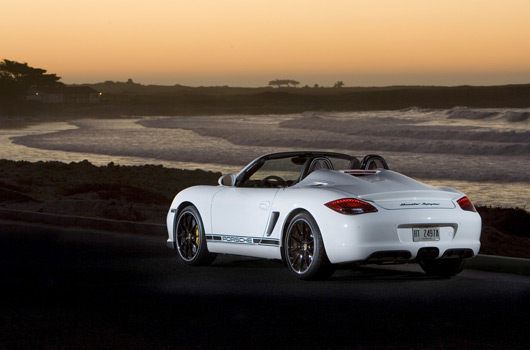
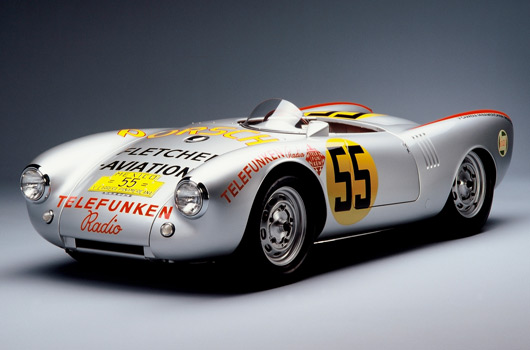
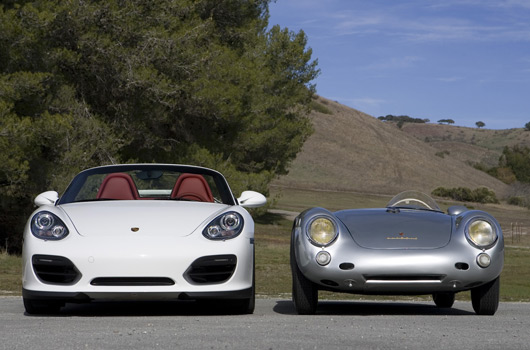
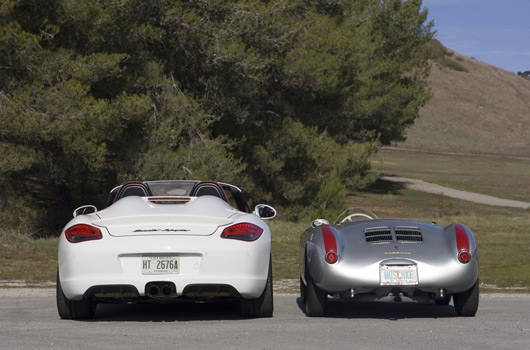
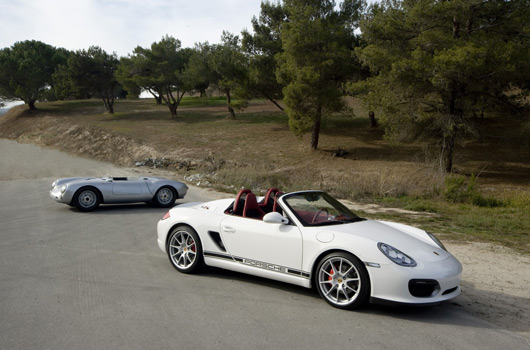
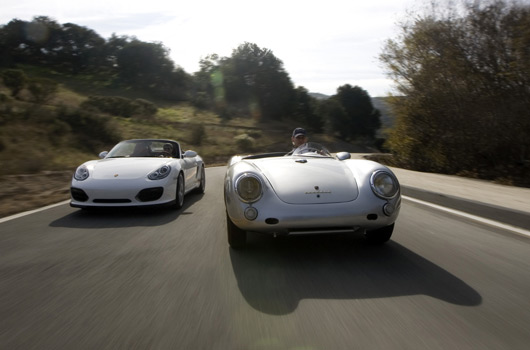
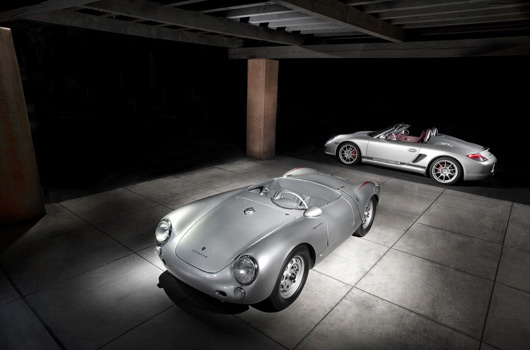
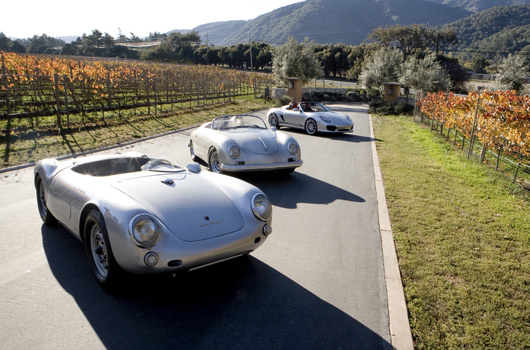
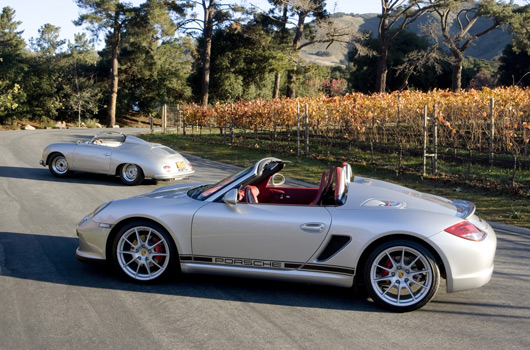
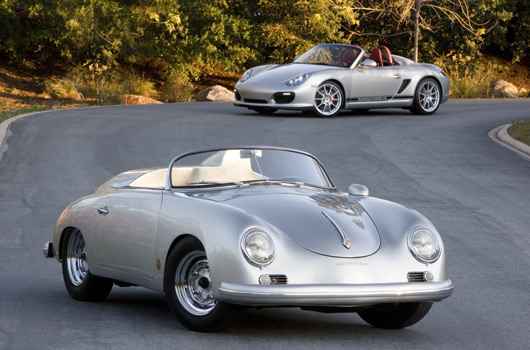
15 replies on “Porsche Boxster Spyder image gallery”
What is with the star shaped wheels? It’s ugly, and it’s not the lightweight forged wheels that Porsche made for the Spyder. Shame Porsche UK, shame.
Also Lima, it’s 235kw…
The wheels look alright to me here, but I would like to see the car in white then 🙂
White with the standard Spyder wheels look the best. But then I am biased haha. Lima, put up a pic of that!
WAY said: “Also Lima, it’s 235kw…”
Yeah, I just did a quick conversion from 320bhp to kW and it comes in at 238kW, so rounded up.
It’s unsual for Porsche not to list power in kW, even direct from Porsche.de the material I have come across only states 320bhp, with no kW conversion.
@Njave, when I get to those other pics, which may not be until tomorrow morning unfortunately, there’s a few more pics of the Spyder in white.
Porsche tend to under state the figures & 0-100kms It might be even 245kw!
@Liam Well thanks for that, hopefully I can get them sooner, it’s the time difference that screws up in this case here.
And yeah, you have an e-mail, so check it out and reply when you have the time.
Cheers mate! 🙂
Slightly OT: Hey Cat, I just noticed you have the Softronic flash on your Cayman S DFI. Worth the money? Any issue? Did you do the plenum as well?
Njave/Lima, here is a link to a lot of Spyder photos from a Spyder fanatic. If you want his email address to ask permission to use his photos then let me know.
http://www.navanod.fotki.com/2011-porsche-boxste/
WAY, in short the Softronic tune will give the 3.4L DFI:
* Better throttle response, “Sports Mode” constantly on.
* 500rpm increase before fuel limiter.
* Better low end torque, smoother response over rev range.
* Increases the PSM threshold
* Approx 250kw @ 380Nm with tune.
[…] Henderson has got her hands on the Porsche Boxster Spyder for the benefit of her Fifth Gear Web TV audience. Even better she took it to the track and gave a […]
[…] another video review of the Porsche Boxster Spyder. It’s a 90-second effort with thanks to Autocar. It’s no surprise that the result is […]
[…] you’re expecting this to be a Boxster Spyder wearing a tin hat you’re probably around the mark. At least the Cayman CS follows a similar […]
[…] current Boxster range has been signed with the Spyder which is fast becoming acknowledged as a modern classic. The new range will build on that legacy […]
[…] 320hp from its 3.4 litre flat six. That’s 10hp more than a Boxster S and the same as a Boxster Spyder. That means you can despatch 100km/h in a reasonably brisk 5.2 seconds and, if you try really hard, […]
[…] The roof on the Spyder is still made from lightweight fabric and it’s still manual. Although it’s still cumbersome to operate, it now remains attached to the car at all times, which is a big improvement on the 987 Spyder. […]